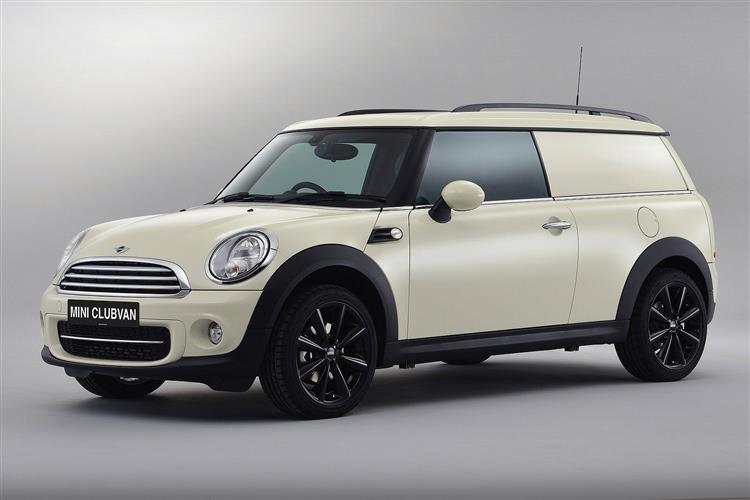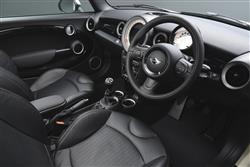This is a sample, showing 30 seconds of each section.
THE COMMERCIAL CLUB (some text hidden) SECTIONED_new_miniclubvan_2014
By Jonathan Crouch
Introductionword count: 85
The BMW Group's very first UK market commercial vehicle was a very fashionable one. In 2013, the MINI Clubvan hit on an idea only tentatively previously explored, namely that of the chic, boutique LCV. The model was based on MINI's first generation Clubman small estate car and the idea was that this van variant would appeal to small business owners who needed a city van but didn't require much space and didn't want something well van-like. How does it stack up as a used buy?
Modelsword count: 10
compact van (1.6 petrol - 98bhp/120bhp. 1.6 diesel - 110bhp)
Historyword count: 253
You might think that commercial vehicles are all about space and sensible practicality - and most of them are. But what about businesses that don't prioritise these things? Their fashionable wares don't occupy much room and to transport them, their owners might rather like a set of wheels that might attract the odd interested glance or two. It was to satisfy these people that in 2013, MINI brought us the Clubvan. Only MINI could have made this model, the BMW brand recognising that its nameplate's heritage in small load luggers went back over half a century. They thought it a pity not to play on that. Especially given that in the Clubman estate car, MINI had a ready-made base for such a vehicle. The designers had only to go to that model, remove the rear seat, add a bulkhead and blank out the rear side windows and the Clubvan was born. It was of course a very different thing from the 1960 Morris Mini Van original. That was a compact and affordable urban workhorse. The Clubvan in contrast, proved to be much more of a fashionable purchase, which made it a little ironic that its 500kg payload was exactly double that of that old fashioned predecessor. It was all proof, MINI reckoned, that style could be practical and practicality could be stylish. The Clubvan was to have a short shelf life, selling in modest numbers to florists and boutique owners only until the third generation MINI Hatch range was launched in early 2015.
What You Getword count: 503
The original Morris Mini Van inspired the subsequent Morris Mini Traveller estate car. Here it was the other way round, with the modern first generation MINI Clubman passenger model on sale for six years before this Clubvan model was introduced early in 2013. Once the Clubvan arrived, it was quickly clear that there was nothing else quite like it. Yes, the LCV market had long targeted florists, couriers and electricians with very small vans. Yes, attempts had been made to make these a little more fashionable with models like Ford's Fiesta Sportvan and Vauxhall's Corsavan Sportive. Nothing though, with the retro fashionable appeal on offer here. This was probably the coolest small commercial vehicle to hit the market since the Nissan S-Cargo. Unlike most LCVs, Clubvans tended to be bought by the people who'd be driving them. Trendy, upmarket urban operators who wanted such a vehicle to do its bit in promoting the image of their businesses. People with cute little companies selling things like cup cakes or chocolate boxes, flowers or frills. Folk who didn't care that the twin rear doors of this MINI opened to reveal a loading volume of just 860-litres because they were never likely to carry anything big enough to trouble the 500kg maximum payload. Mostly, owners didn't even care about the almost useless side door - you'd hesitate to call it a 'side loading door' because you can't actually load anything through it thanks to the way the interior mesh divider allows you to stretch an arm in but not a lot else. But we're sounding all practical here and we don't mean to be because there's little point in approaching a Clubvan in that frame of mind. Not if you want to like it anyway. And like it you probably will once you get in, fiddle with the height adjustable driver's seat and take your place behind the height and reach-adjustable wheel. It is, as you might expect, exactly the same as any normal second generation modern era MINI here - which means that it's far nicer than any other comparable commercial vehicle we can think of, with decent build quality from the British Oxford factory. There's that iconically-large central speedometer for a start, sadly abandoned by MK3 MINI models but present and correct here as a display not only for your velocity but also for everything from the optional sat nav to the onboard computer. So much stuff in fact that the actual speed you're travelling at is often visually crowded out in the clutter. Just as well then, that there's also an additional digital read-out on the sweet little circular rev counter that sprouts above the steering column. Other MINI eccentricities include the keyfob-slot starter and the small, neat toggle-style electric windows switches that you'll find on the dash rather than in their usual place on the doors. Cabin storage includes a deep lidded glovebox and (rather small) door pockets, plus you get a couple of cup holders and the bottom of the fascia.
To see the full road test text contact us on 0330 0020 227
Pictures (high res disabled)

.jpg)
|
.jpg)
|
.jpg)
| |||
.jpg)
|
.jpg)
|
.jpg)
| |||

|
Scoring (subset of scores)
Category:
| Performance | |
| Handling | |
| Comfort | |
| Space | |
| Styling, Build, Value, Equipment, Depreciation, Handling, Insurance and Total scores are available with our full data feed. | |



